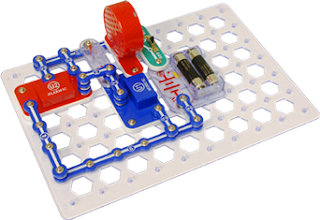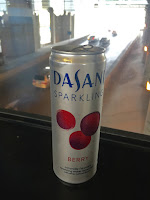ISTE 2016 opened on Sunday, June 26 in Denver, CO. Each year the International Society for Technology in Education (ISTE) holds it's annual three and a half day conference in a different U.S. city. There are hundreds of sessions and thousands of attendees from all 50 states and 70 countries so the convention center is infiltrated for the week with techie educators looking for ways to use technology to inspire, engage, and help their students collaborate.
Having been fortunate to have attended ISTE in Philadelphia, Denver, and San Diego in previous years, this year there were 13 administrators, teachers, and tech support specialists from 'Iolani who made the trip.
A big takeaway for the week was "ask the right questions." These are the questions that can't be answered with a single google search. I was reminded about the
Google a Day questions.
The conference started off with an Ignite presentation by
Kerry Gallagher in her quick session on how to (really) go paperless. Great ideas right from the get-go!
The
opening keynote was by Dr. Michio Kaku, a theoretical physicist, from City University of NY. Phew! It was 45 minutes of mind-blowing predictions and breakthroughs in neuroscience. His newest book The Future of the Mind (
YouTube short from Dr. Kaku about why he wrote this book) is a NY Times best seller.
I went this year with a goal to learn more about integrating coding into my curriculum and to learn more about the tools in Microsoft for Education. There were plenty of sessions covering both those areas.
About Microsoft
- Office 365 has monthly updates now, not every 3 years.
- O365@microsoft.edu - weekly webcasts Tues - Thurs, support specialists - all free
- Office online - mobile version, not as robust but can edit on the go
- MC Classroom is not an LMS
- Class Notebooks in OneNote (my all-time favorite productivity app) for classes and staff
- Forms based on Excel survey feedback - use for formative assessment. Quickly create custom quizzes, surveys and questionaires. Built in analytics.
- Office Lens (add-on for PC or iOS) is the BOMB! for taking pics, especially of a screen, and importing into doc
Without Office Lens images are angled - not pretty.
Office Lens straightens out the image without any glare.
- Combine textboxes in One Note by selecting gray arrow and dragging - easy to reorder
- Skype for conferencing, chatting/IM, host a meeting, teach a webinar
- Skype in the Classroom - mystery skype with another class. By asking questions, students figure out where the other classroom is (in the world).
- Sway - digital storytelling, simple to share, easy to modify, add content from variety of sources
- Mix - I want to learn more about this PowerPoint add-in
About coding in the classroom:
- Ozobots in exhibit hall - show price not special, it's the regular education price . . . =( Got on their email list and attended a webinar post-conference. It was excellent and hope to do more.
- Most of what I saw and learned was from the playgrounds - an area where groups displayed student work or had computers to try out their programs. Learned a lot from talking to teachers.
- Little Bits - saw great student projects. It's all about posing the right problem (i.e. asking questions that allow students to interpret, think, discover, and innovate. Questions like "build the perfect amusement park ride," or "make the Olympics more safe" which allow students to define the problem and come up with their own solutions.
There were over 500 exhibitors:
- Quizizz - saw this for the first time at GenCyber camp in June. Met the creators. Great formative assessment tool - easy to create, competitive or not, analytics. Will definitely be using this.
Fluid Math - software for pen-enabled tablets and PCs to easily create, draw, graph, create tables from handwritten equations on SMART Board
Tango Teach - software for interactive whiteboards; dynamic, intuitive . . .
Of course a hightlight of the conference was seeing SEE friends at the SMART booth. I was shocked to see the HUGE picture wall on the backside of the booth. Got a few laughs from it.
The SMART booth
Ran into Heather Lamb. Staci Gelbaum had a great presentation on their global collaboration project with special needs students.
More SEEs Amy Sterckx, Jackie Patanio, and Liane Dattilo
John Howe and Tracey Winey shared their STEM project. Pictured with Tim Toyoshima (VP Software Development)
Stefan Schwarz and Staci Gelbaum presenting in SMART booth.
Fellow math SEE Dan Bohn. It was fun hanging out again!
The SMART Exemplary Educators (SEEs) in attendance were invited to a SEE Mixer at the Embassy Suites. It was an intimate gathering with people from SMART. I was surprised to be recognized, on behalf of 'Iolani School, with a certificate and a Kapp IQ (interactive flat panel) for having the second largest number of SMART amp activations last year.
Wow that we had that many active users! I teach with many who are open to new teaching strategies and are willing to step outside of their comfort zones to help increase student learning and engagement. This high number of activations is a result of so many different teachers (who teach math, biology, chemistry, physics, English, history, Chinese language, health, and religion) at so many different levels (grades 3-12) who gave SMART amp a try.
Wow that we got a beautiful piece of hardware! Mahalo, SMART!
What more could I ask for with so many people in a humongous facility? Yup, I ran into a fellow Presidential Awardee Melissa Colonis.
It was an inspiring week. It was, no doubt, information overload. There are things I'll be able to use right away. There are others that will be the "mustard seed" - small now but with the potential to bloom into something bigger.





























